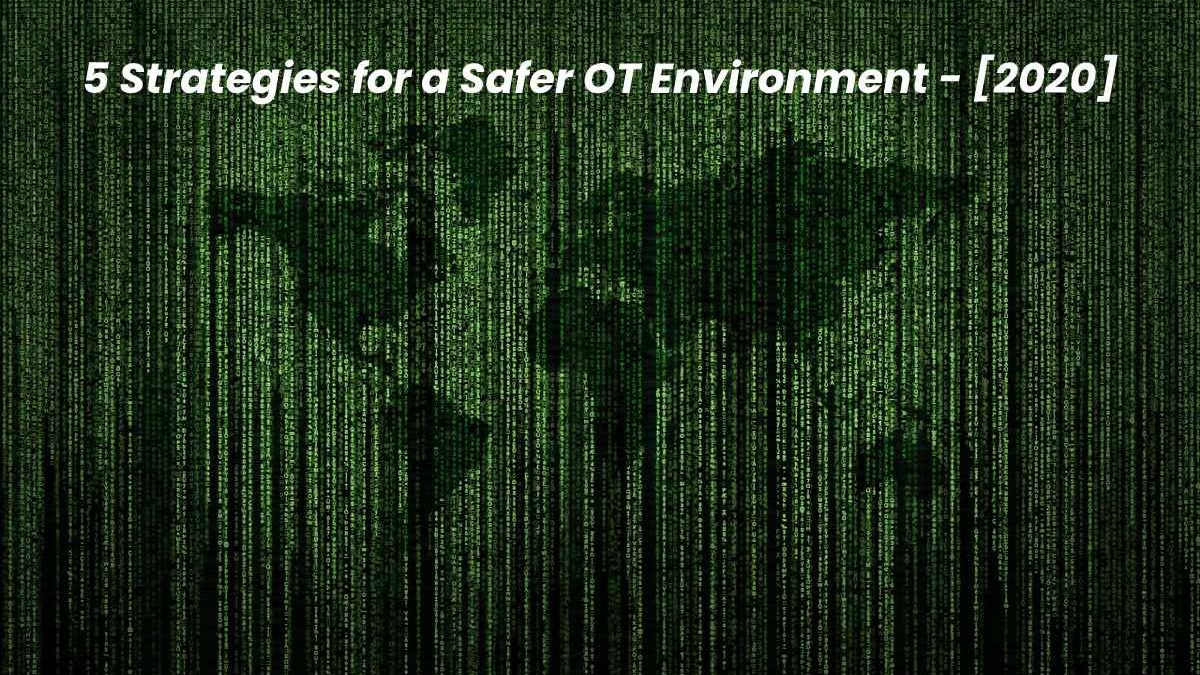OT Environment: Networking is a prerequisite for the digital transformation. The areas of IT (information technology), OT (operational technology), and ICS (industrial control systems), which are moving ever closer together, are no longer isolated from the other areas of the company.
This increases the risk of cyber threats in running systems. And a successful attack could mean massive damage to production, security, and system availability. We put together five recommendations for action that lay a solid basis for effective risk minimization and a secure OT environment:

Table of Contents
Strategy 1 – Raise End-user Awareness of Dangers
For users in IT environments, there are the same security threats as in OT environments: phishing attacks, weak passwords, poor security of hardware devices. However, the fundamental focus of an OT engineer is to keep the framework running. That means that the cybersecurity threats aren’t the focus for him.
Against this foundation, it bodes well to zero in on the danger for the general business. Companies should lead the discussion of the topic of cybersecurity in the OT context based on the risk of production interruption. It can help OT engineers and operations managers access the security tools to visualize all of their assets and see how a single vulnerability could affect overall production. Many are now looking to cloud solutions such as SASE (Secure Access Service Edge) to deliver robust security in a scalable and affordable way.
Strategy 2 – Recognize the real assets in the company
Detecting assets is a critical security component for IT and OT environments and one of the most difficult. OT systems are notoriously lacking in transparency. Many organizations just don’t know their assets.
Therefore, the first step is comparatively simple. Companies should develop a detailed understanding of the resources available in the OT network. This means that the operating systems, the firmware levels, the installed software, the existing libraries. And, the way in which the individual assets communicate with each other. And – perhaps most importantly – the importance of the assets for the entire OT system is documented have to.
Strategy 3 – Systematic Network Segmentation
As more IT elements are introduced into the OT environment, the air gap model on which so many OT networks depend as their primary security element is eroding. For example, an OT engineer might want to check his e-mails via a human-machine interface (HMI) on the factory floor so that he can add a second Network Information Center (NIC).
It is essential to think through the network segmentation requirements before access is necessary to enable secure interaction between IT and OT infrastructure. And also, it is better not to create new connections in an emergency. But to create system-to-system connectivity in a Purdue model.
It is also advisable to set up firewalls and firewall controls to create a hierarchy in the network. The Purdue hierarchy control model is a framework that is widely used by manufacturers in various industries. It is helpful to understand how data typically flows through networks and how to secure each of the network zones. And their respective elements accordingly.
Strategy 4 – Connectivity and Access Controls
While there are established practices for identity and access management in IT environments, there is a lot of catching up to do in OT. They often share credentials internally and externally and don’t limit access to specific network devices or segments.
It is essential to assume “hyperconnectivity” and plan it in advance in order to ensure productivity and operations. The following basic principles apply here: identity management, password requirements, multi-factor authentication, synchronization of access to the Active Directory. Remote access functions can also be helpful. However, it should avoid using the same remote access solution for both IT and OT. In order to reduce the attack surface and avoid downtimes. In an emergency, you can clearly see who had access to the affected system and cut the connection if necessary.
Strategy 5 – Vulnerability and Patch Management
Legacy systems, business-critical framework conditions, and the limited patch windows of OT environments typically make it challenging to develop a holistic strategy for hazard prevention and patch management. Instead of patching through hundreds of vulnerabilities, users need to understand which potentially compromised systems are most important to production.
Ideally, they close security gaps in the next regular maintenance course. With the knowledge in the back of the mind that no patch or firmware update fix is available for many OT vulnerabilities. This is where balancing control mechanisms come into play in order to limit the effects of a vulnerability in the event of an attack. These mechanisms include network segmentation and isolation, Password management, and continuous threat monitoring and tracking (Deep Packet Inspection). Ultimately, it’s about the balance between security effort and income.
Searches Related to OT Environment
- operational technology examples
- what is the difference between it and ot?
- it vs ot ppt
- operational technology vs information technology
- operational technology cybersecurity
- it/ot convergence strategy
- what is operational technology
- ot security

